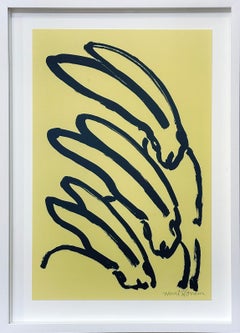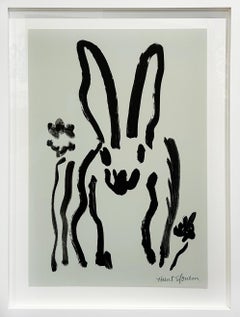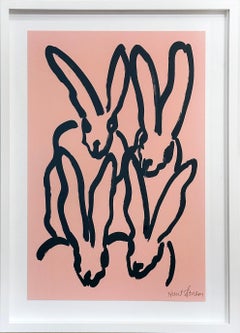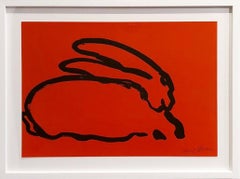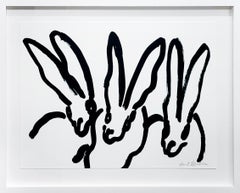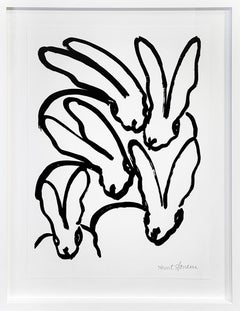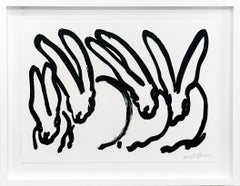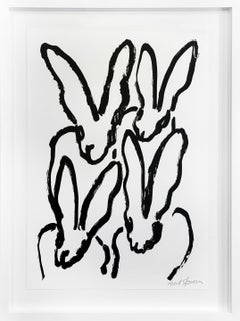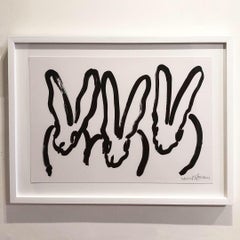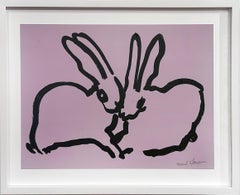Hunt Slonem Lithograph
2010s Contemporary Animal Prints
Lithograph
2010s Contemporary Animal Prints
Lithograph
2010s Contemporary Animal Prints
Lithograph
2010s Contemporary Animal Prints
Lithograph
2010s Contemporary Animal Prints
Lithograph
2010s Contemporary Animal Prints
Lithograph
2010s Contemporary Animal Prints
Lithograph
2010s Contemporary Animal Prints
Lithograph
2010s Contemporary Animal Prints
Lithograph
Recent Sales
2010s Contemporary Animal Prints
Lithograph
2010s Contemporary Animal Prints
Lithograph
2010s Contemporary Animal Prints
Lithograph
1980s Contemporary Animal Prints
Paper, Lithograph, Screen
1980s Contemporary Animal Prints
Paper, Lithograph, Screen
2010s Contemporary Animal Prints
Lithograph
2010s Contemporary Animal Prints
Lithograph
2010s Contemporary Animal Prints
Lithograph
2010s Contemporary Animal Prints
Lithograph
2010s Contemporary Animal Prints
Lithograph
2010s Contemporary Animal Prints
Lithograph
2010s Contemporary Animal Prints
Lithograph
2010s Contemporary Animal Prints
Lithograph
2010s Contemporary Animal Prints
Lithograph
2010s Contemporary Animal Prints
Lithograph
2010s Contemporary Animal Prints
Lithograph
2010s Contemporary Animal Prints
Lithograph
2010s Contemporary Animal Prints
Lithograph
2010s Contemporary Animal Prints
Lithograph
2010s Contemporary Animal Prints
Lithograph
2010s Contemporary Animal Prints
Lithograph
2010s Contemporary Animal Prints
Lithograph
2010s Contemporary Animal Prints
Lithograph
2010s Contemporary Animal Prints
Lithograph
2010s Contemporary Animal Prints
Lithograph
2010s Contemporary Animal Prints
Lithograph
2010s Contemporary Animal Prints
Lithograph
2010s Contemporary Animal Prints
Lithograph
2010s Contemporary Animal Prints
Lithograph
2010s Contemporary Animal Prints
Lithograph
2010s Contemporary Animal Prints
Lithograph
2010s Contemporary Animal Prints
Lithograph
2010s Contemporary Animal Prints
Lithograph
2010s Contemporary Animal Prints
Lithograph
2010s Contemporary Animal Prints
Lithograph
2010s Contemporary Animal Prints
Lithograph
2010s Contemporary Animal Prints
Lithograph
2010s Contemporary Animal Prints
Lithograph
2010s Contemporary Animal Prints
Lithograph
2010s Contemporary Animal Prints
Lithograph
2010s Contemporary Animal Prints
Lithograph
2010s Contemporary Animal Prints
Lithograph
2010s Contemporary Animal Prints
Lithograph
2010s Contemporary Animal Prints
Lithograph
2010s Contemporary Animal Prints
Lithograph
2010s Contemporary Animal Prints
Lithograph
2010s Contemporary Animal Prints
Lithograph
2010s Contemporary Animal Prints
Lithograph
2010s Contemporary Animal Prints
Lithograph
2010s Contemporary Animal Prints
Lithograph
2010s Contemporary Animal Prints
Lithograph
2010s Contemporary Animal Prints
Lithograph
2010s Contemporary Animal Prints
Lithograph
2010s Contemporary Animal Prints
Lithograph
2010s Contemporary Animal Prints
Lithograph
2010s Contemporary Animal Prints
Lithograph
2010s Contemporary Animal Prints
Lithograph
2010s Contemporary Animal Prints
Lithograph
People Also Browsed
21st Century and Contemporary Spanish Minimalist Centerpieces
Oak
2010s Dutch Modern Side Tables
Resin
21st Century and Contemporary Contemporary Abstract Sculptures
Wood, Lights, LED Light, Mixed Media, Acrylic, Neon Light
21st Century and Contemporary Japanese Mid-Century Modern Table Lamps
Metal
1990s Italian Mid-Century Modern Armchairs
Rattan
21st Century and Contemporary Mexican Mid-Century Modern Table Lamps
Wood, Fabric, Linen, Fiberglass
21st Century and Contemporary Chinese Modern Vases
Porcelain
21st Century and Contemporary Swedish Mid-Century Modern Table Lamps
Textile
2010s Dutch Modern Tableware
Travertine
21st Century and Contemporary Neo-Expressionist Animal Paintings
Oil, Panel
2010s North American Beds and Bed Frames
Cotton
2010s Post-Modern Animal Paintings
Wood, Mixed Media, Oil
2010s Neo-Expressionist Abstract Paintings
Oil, Panel
2010s Dutch Modern Serving Bowls
Marble
2010s Contemporary Still-life Paintings
Canvas, Oil
2010s Italian Mid-Century Modern Chandeliers and Pendants
Brass
Hunt Slonem Lithograph For Sale on 1stDibs
How Much is a Hunt Slonem Lithograph?
Hunt Slonem for sale on 1stDibs
Hunt Slonem has mastered the art of repetition in his exuberant Neo-Expressionist paintings. Some of his favorite subjects are bunnies, butterflies and the tropical birds that live in the private aviary nestled within his 30,000-square-foot studio complex in Brooklyn, New York.
“I believe in repetition like a holy mantra or rosary,” Slonem told Introspective, referring to his artistic method. “I am slightly influenced by Pop art, like the repetition of soup cans, postage stamps and celebrities. It’s something I have been doing my whole life.”
Slonem’s depictions of birds — which are often rendered in thick, gestural brushstrokes and arranged in a loose grid — owe to a fascination with tropical avian life that he developed during a childhood spent in Hawaii and Nicaragua. Today, along with the aviary, his studio contains a personal garden, a collection of antiques and walls and walls of artworks.
“I am a collector of things. My primary focus is color and objects. I love to make them work in a space,” Slonem says. “Sometimes I define a space with color.”
Besides birds, Slonem has painted so many bunnies that they’ve become a signature. Limned in expressive, urgent strokes on flat, vibrantly colored backgrounds, these creatures fascinate through their subtle variations. “I have painted hundreds of rabbits, but each one is different,” the artist has explained. “Each has its own personality, and it just comes through me.”
The multitalented Slonem also sculpts, makes prints, creates installations and restores historic spaces. His work has achieved cult status among collectors and is represented in the permanent collections of such esteemed institutions as the Metropolitan Museum of Art. Slonem has even made an appearance on Real Housewives of New York.
Find original Hunt Slonem paintings, prints and other art for sale on 1stDibs.
A Close Look at Contemporary Art
Used to refer to a time rather than an aesthetic, Contemporary art generally describes pieces created after 1970 or being made by living artists anywhere in the world. This immediacy means it encompasses art responding to the present moment through diverse subjects, media and themes. Contemporary painting, sculpture, photography, performance, digital art, video and more frequently includes work that is attempting to reshape current ideas about what art can be, from Felix Gonzalez-Torres’s use of candy to memorialize a lover he lost to AIDS-related complications to Jenny Holzer’s ongoing “Truisms,” a Conceptual series that sees provocative messages printed on billboards, T-shirts, benches and other public places that exist outside of formal exhibitions and the conventional “white cube” of galleries.
Contemporary art has been pushing the boundaries of creative expression for years. Its disruption of the traditional concepts of art are often aiming to engage viewers in complex questions about identity, society and culture. In the latter part of the 20th century, contemporary movements included Land art, in which artists like Robert Smithson and Michael Heizer create large-scale, site-specific sculptures, installations and other works in soil and bodies of water; Sound art, with artists such as Christian Marclay and Susan Philipsz centering art on sonic experiences; and New Media art, in which mass media and digital culture inform the work of artists such as Nam June Paik and Rafaël Rozendaal.
The first decades of the 21st century have seen the growth of Contemporary African art, the revival of figurative painting, the emergence of street art and the rise of NFTs, unique digital artworks that are powered by blockchain technology.
Major Contemporary artists practicing now include Ai Weiwei, Cecily Brown, David Hockney, Yayoi Kusama, Jeff Koons, Takashi Murakami and Kara Walker.
Find a collection of Contemporary prints, photography, paintings, sculptures and other art on 1stDibs.
Finding the Right Prints And Multiples for You
Decorating with fine art prints — whether they’re figurative prints, abstract prints or another variety — has always been a practical way of bringing a space to life as well as bringing works by an artist you love into your home.
Pursued in the 1960s and ’70s, largely by Pop artists drawn to its associations with mass production, advertising, packaging and seriality, as well as those challenging the primacy of the Abstract Expressionist brushstroke, printmaking was embraced in the 1980s by painters and conceptual artists ranging from David Salle and Elizabeth Murray to Adrian Piper and Sherrie Levine.
Printmaking is the transfer of an image from one surface to another. An artist takes a material like stone, metal, wood or wax, carves, incises, draws or otherwise marks it with an image, inks or paints it and then transfers the image to a piece of paper or other material.
Fine art prints are frequently confused with their more commercial counterparts. After all, our closest connection to the printed image is through mass-produced newspapers, magazines and books, and many people don’t realize that even though prints are editions, they start with an original image created by an artist with the intent of reproducing it in a small batch. Fine art prints are created in strictly limited editions — 20 or 30 or maybe 50 — and are always based on an image created specifically to be made into an edition.
Many people think of revered Dutch artist Rembrandt as a painter but may not know that he was a printmaker as well. His prints have been preserved in time along with the work of other celebrated printmakers such as Pablo Picasso, Salvador Dalí and Andy Warhol. These fine art prints are still highly sought after by collectors.
“It’s another tool in the artist’s toolbox, just like painting or sculpture or anything else that an artist uses in the service of mark making or expressing him- or herself,” says International Fine Print Dealers Association (IFPDA) vice president Betsy Senior, of New York’s Betsy Senior Fine Art, Inc.
Because artist’s editions tend to be more affordable and available than his or her unique works, they’re more accessible and can be a great opportunity to bring a variety of colors, textures and shapes into a space.
For tight corners, select small fine art prints as opposed to the oversized bold piece you’ll hang as a focal point in the dining area. But be careful not to choose something that is too big for your space. And feel free to lean into it if need be — not every work needs picture-hanging hooks. Leaning a larger fine art print against the wall behind a bookcase can add a stylish installation-type dynamic to your living room. (Read more about how to arrange wall art here.)
Find fine art prints for sale on 1stDibs today.
